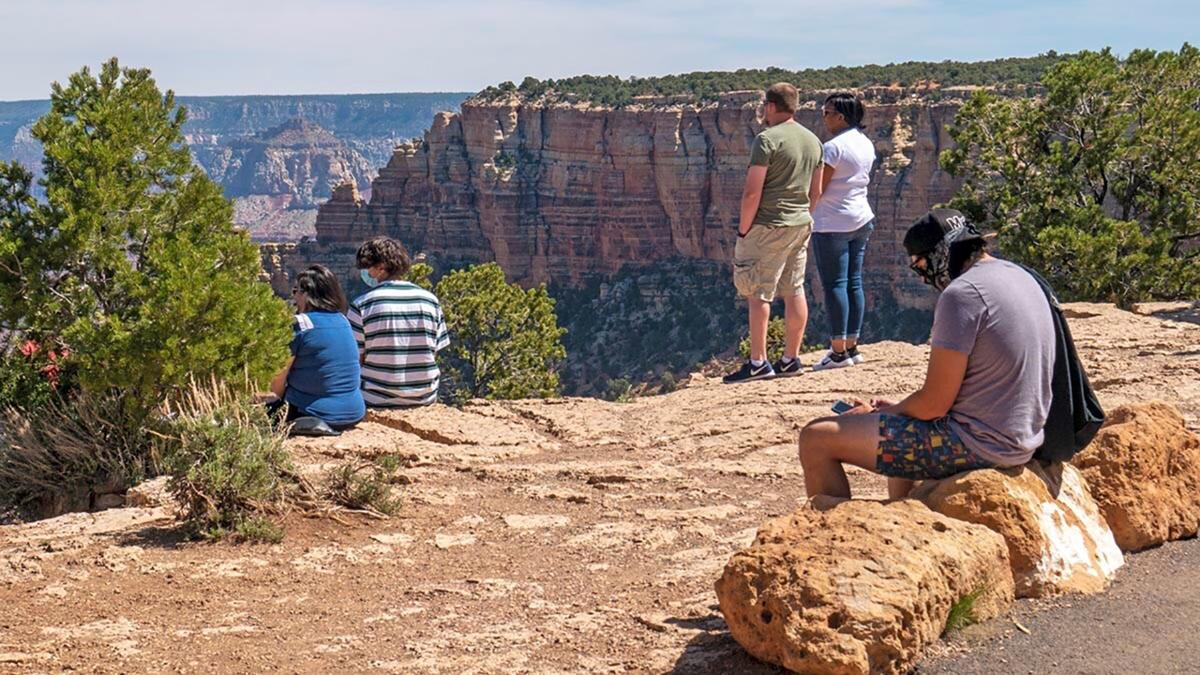After a prolonged government shutdown cut into their revenues in 2019, business owners around the Grand Canyon National Park said 2020 appeared to be on track to be a bounce-back year for them.
Then COVID-19 hit.
The park was closed from April 1 to May 15, when it began to reopen on a limited basis. Tourists are returning, along with their wallets, but business officials say times are still tough.
“I don’t know if they’re going to be able to hang on,” said Laura Chastain, general manager for the Grand Canyon Chamber of Commerce and Visitors Bureau, of some of the smaller businesses in the region. “Being rural, for our community, it really hit people hard.”
The park generates more than $1 billion in economic activity a year for the region, part of the $41.7 billion generated by parks across the country, the National Park Service says. But for the Grand Canyon, revenues fell from $1.2 billion in 2018 to $1.1 billion in 2019, according to the National Park Service’s 2019 Visitor Spending Effects Report.
People are also reading…
Business owners were hopeful at the beginning of this year, when the park service’s Monthly Public Use Report showed 19% more visitors at the Grand Canyon in February 2020 than in February 2019. Then, COVID-19 hit and monthly visits in March fell 39% compared to March 2019.
“We were expecting a 20% increase in business over the 2019 season,” said Korey Seyler, general manager for Grand Canyon Adventures. “Unfortunately, things change.”
Chastain said many of the businesses that rely on the park — tour operators like Seyler as well as hotels, restaurants, retail and more — are currently operating at only 30% capacity.
Seyler said his tour company typically serves groups of up to 12 people but has capped bus occupancy at six because of the coronavirus, with most tours reaching groups of only two to four.
Glenn Tamblingson owns Canyon Country Tours, which specializes in private photography tours. The company resumed tours in early June, but Tamblingson said business has been “very slow.” He said a lot of his clientele are international travelers, who are “relatively nonexistent” right now.
Canyon Country Tours is run by Tamblingson and his wife with few employees. He said the tours are not his only source of income, but if they were, it would “not be good.”
Seyler said financial aid packages and past revenue will keep his company afloat during what would have been its busy season, which should be enough to get through the lean winter months.
“If this extends past spring 2021, we might be looking at a darker reality,” Seyler said. “But for this entire season, we will be OK.”
Chastain, Tamblingson and Seyler all said canyon businesses were gearing up for what was expected to be a busy season before the pandemic hit.
“It was a scary couple of months when this first started, there were $250,000 in refunds that we had to issue,” Seyler said. “Right now, we’re running at about 15% of what we were running at in 2019.”
Even after it began its phased reopening on May 15, Grand Canyon National Park was not in the clear. It suffered additional closures in June because of the Magnum Fire, which began June 8 near Kaibab National Forest.
Chastain said the impact on businesses could be irreversible, but for now, businesses are just looking to get back to work.
“We’re excited to have visitors come back, the businesses are ready,” Chastain said. “They’re just anxious to see people and share the canyon with people.”
For information on park operations, restrictions and rules, go to tucne.ws/grandcanyon









